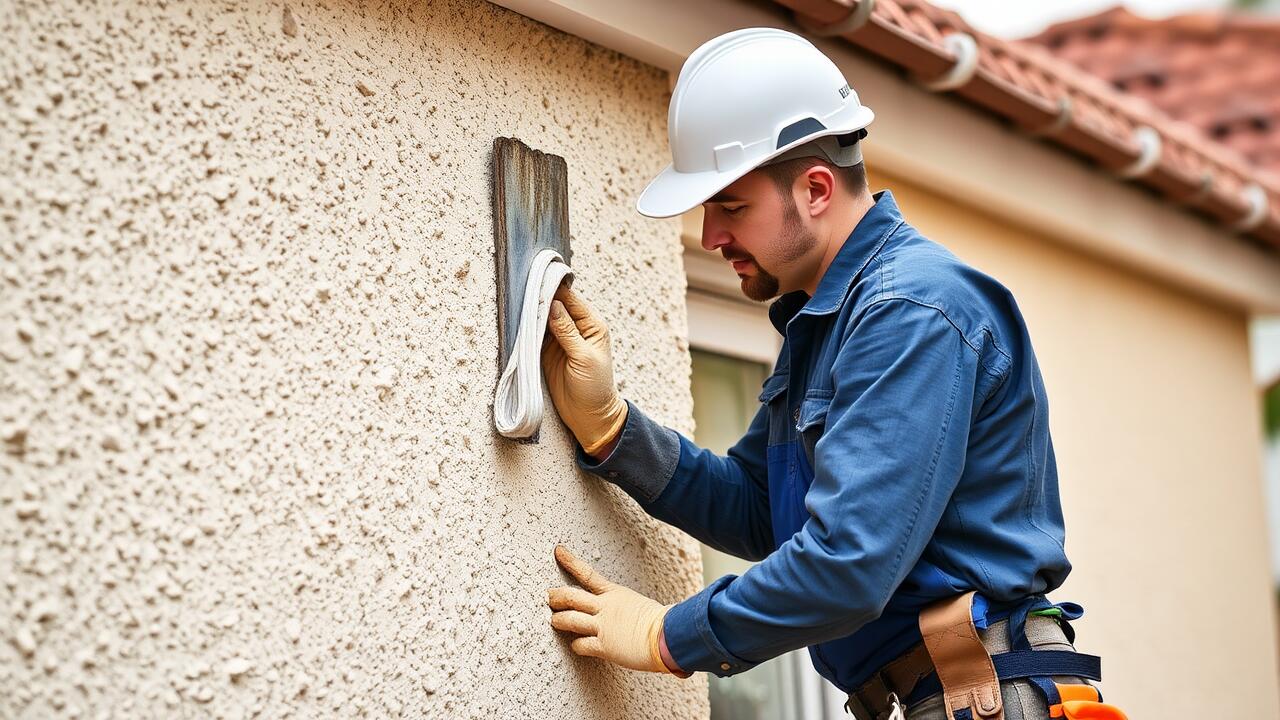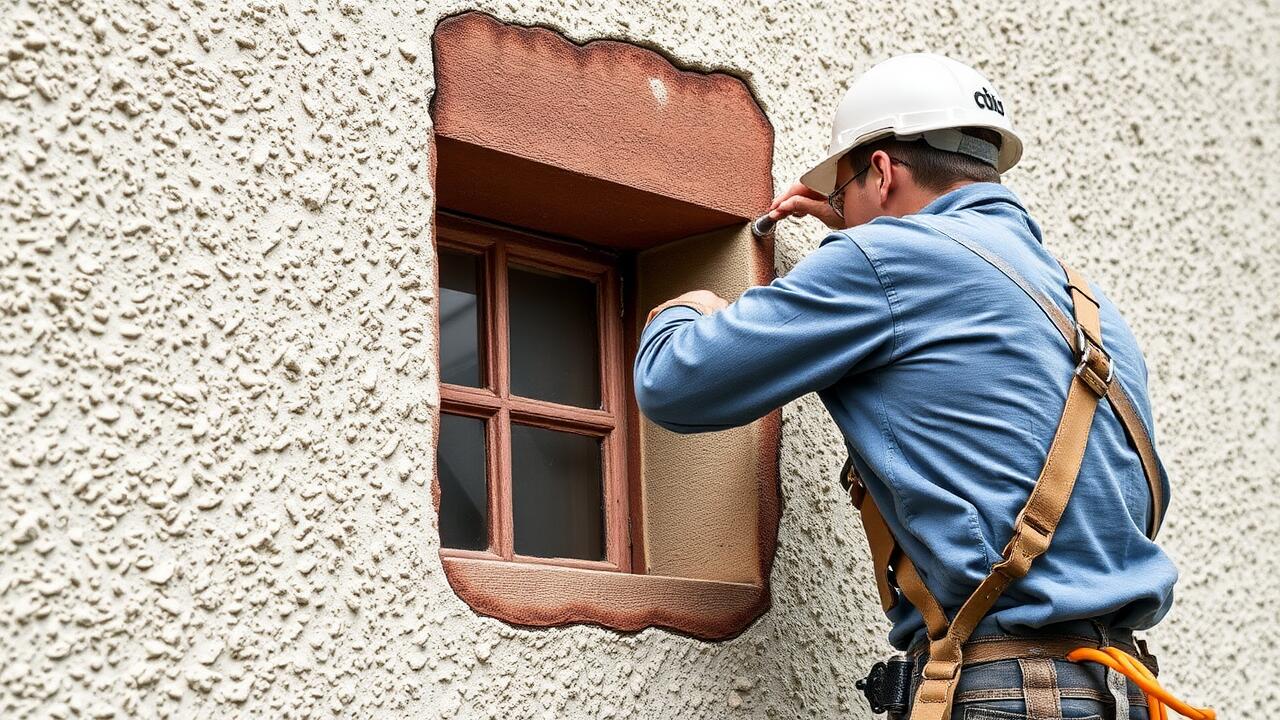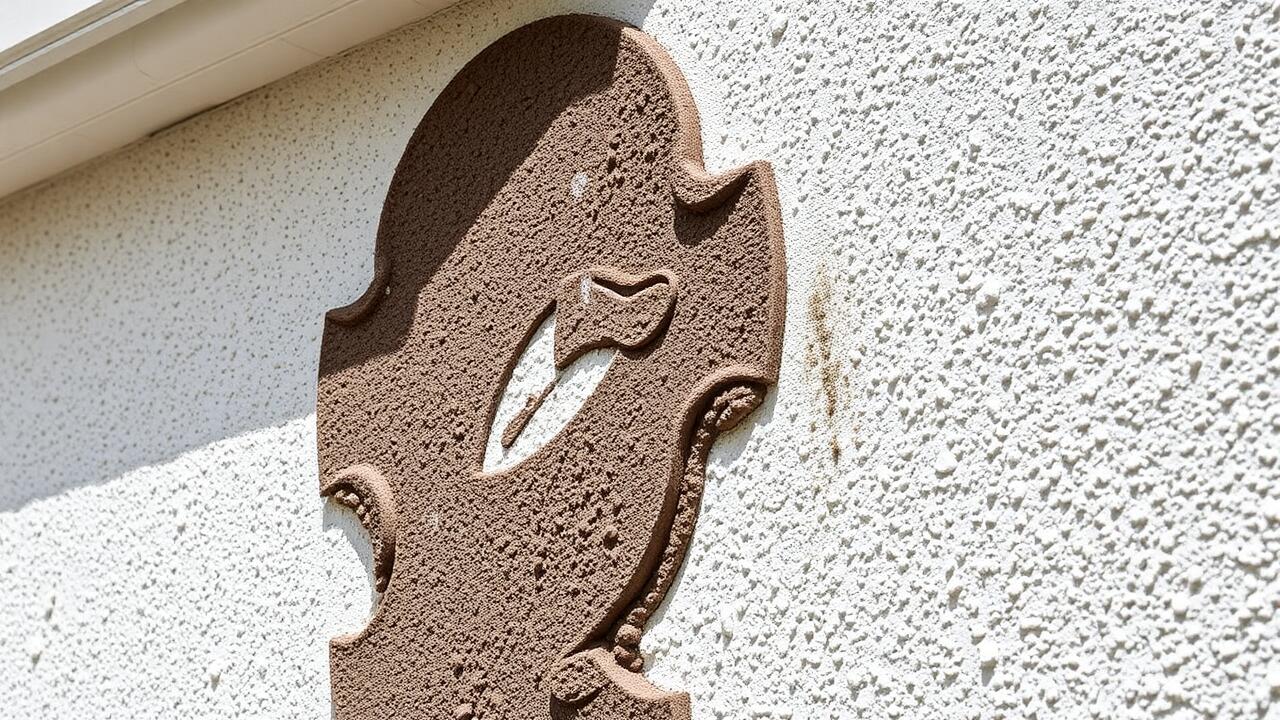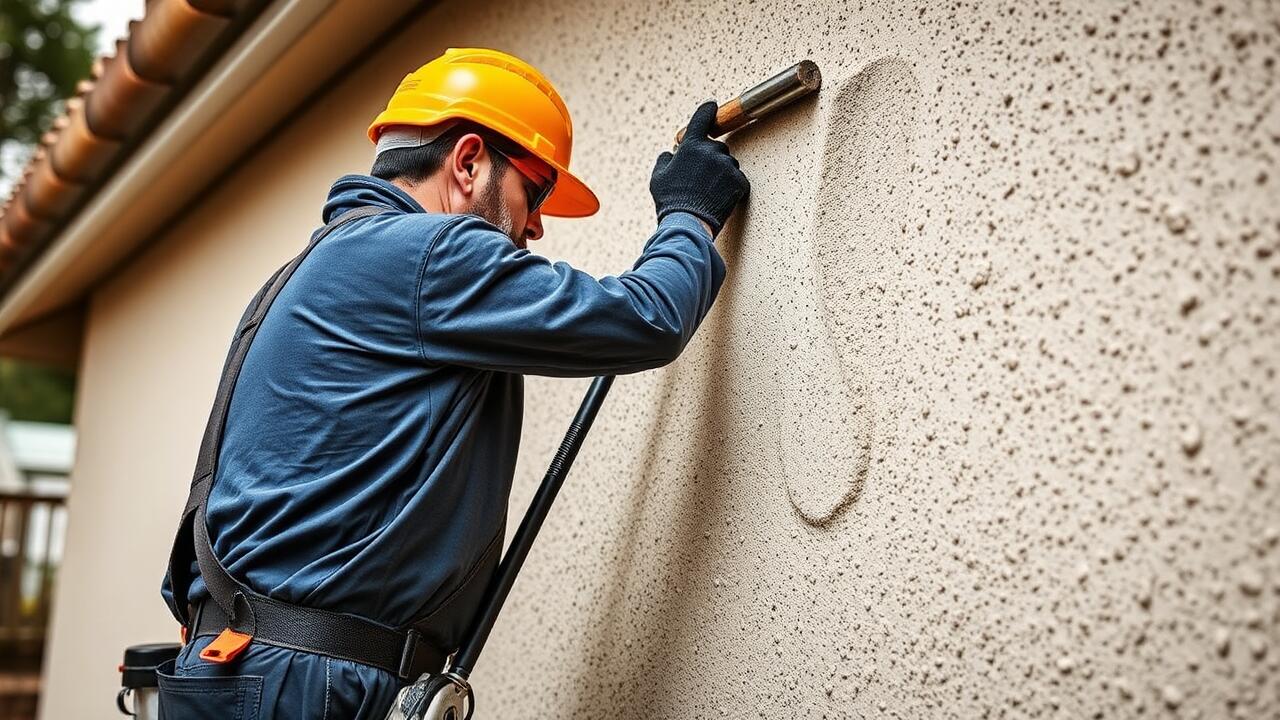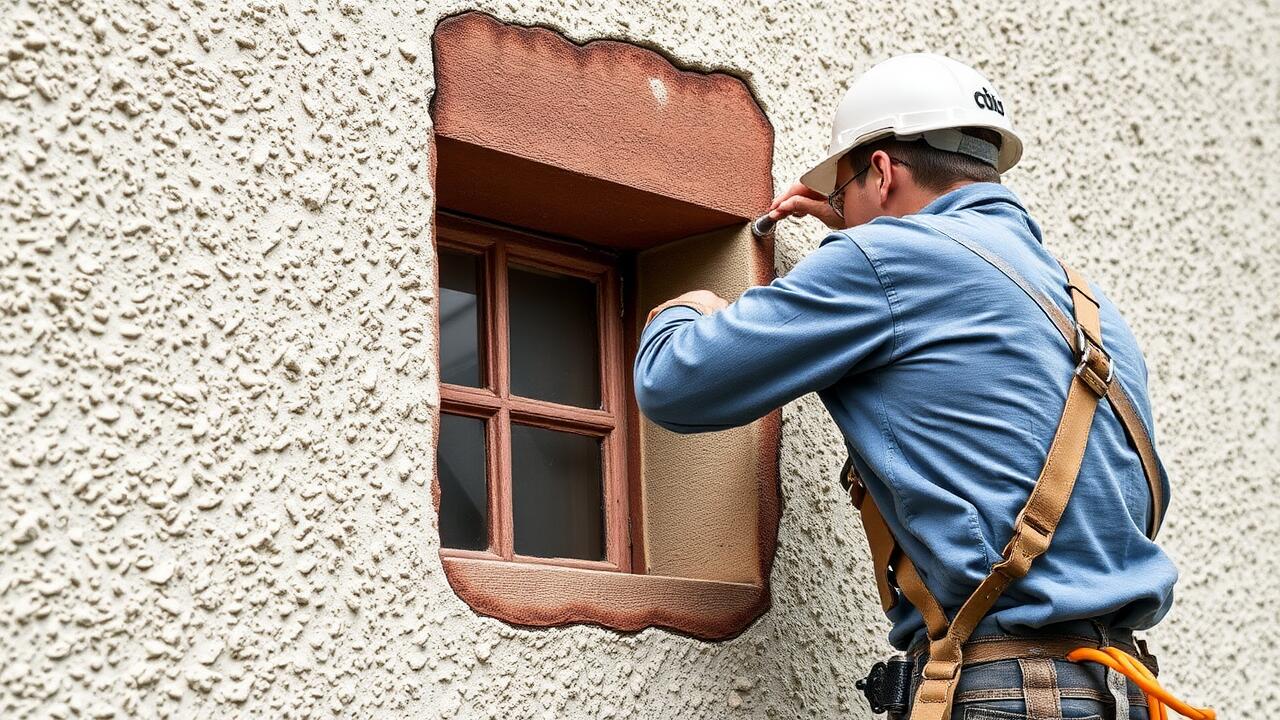
Treatment Options for Existing Efflorescence
Efflorescence on stucco can be treated effectively with several methods. One of the most straightforward approaches is to use a mixture of water and a mild detergent to clean the affected area. Soft bristle brushes work well for scrubbing the efflorescent deposits without damaging the stucco surface. After cleaning, rinse the area thoroughly to ensure no detergent residue remains. For more severe cases, specialized commercial cleaners that target mineral deposits can be applied, providing a more robust solution for removal.
In addition to immediate cleaning methods, considering professional help is advisable for long-term treatment. Hiring experts who specialize in stucco repair can ensure the underlying moisture issues that contribute to efflorescence are addressed. Searching for "Stucco Repair near me" can yield numerous options for local professionals skilled in both remediation and preventative strategies. By dealing with the source of moisture intrusion, homeowners can significantly reduce the likelihood of efflorescence recurring in the future.
Cleaning Methods and Materials
Removing efflorescence from stucco surfaces requires specific cleaning methods and materials. A mild detergent solution can often effectively lift the residue. Use a soft-bristle brush to gently scrub the affected areas, taking care not to damage the underlying stucco. Rinse thoroughly with water to ensure all cleaning agents are washed away. For severe cases, a diluted vinegar solution may help dissolve mineral deposits.
When considering cleaning supplies, avoid harsh chemicals that can harm both the stucco and the surrounding environment. Non-toxic options are preferable, as they are safer for both the user and the structure. For homeowners unsure about the best approach, searching for "Stucco Repair near me" can lead to professionals who will provide effective cleaning and restoration services tailored to individual needs.
Long-term Solutions for Efflorescence Issues
Long-term solutions for efflorescence issues often require a multi-faceted approach to ensure the integrity of the stucco surface and prevent reoccurrence. Proper drainage is crucial in minimizing moisture exposure to stucco walls. Ensuring that gutters and downspouts direct water away from the foundation can significantly reduce water infiltration. Additionally, addressing any grading issues around the property will help keep rainwater away from stucco surfaces, thus minimizing the chance of efflorescence.
Applying durable coatings and sealants can act as a barrier against moisture intrusion. These products form a protective layer that not only enhances aesthetics but also prevents water from penetrating the stucco. Homeowners searching for professional assistance often find it helpful to look for "Stucco Repair near me." This allows them to connect with local experts who can assess the situation and implement effective long-term measures to tackle efflorescence and other related issues.
Durable Coatings and Sealants
Durable coatings and sealants are essential for protecting stucco surfaces from moisture intrusion, which can lead to efflorescence and other deterioration issues. These products create a barrier that resists water penetration while allowing the underlying material to breathe. When selecting a sealant, it is crucial to choose one specifically designed for stucco applications, as these formulations offer the best adhesion and longevity. Regular maintenance and reapplication as needed ensure ongoing protection.
Homeowners searching for effective solutions may find options by looking for "Stucco Repair near me." This phrase often leads to local contractors who can assess the specific needs of the property and recommend appropriate coatings and sealants. Professional application can significantly enhance the durability of the stucco finish, ultimately extending the life of the structure and reducing future maintenance costs.
Comparing Efflorescence to Other Stucco Problems
When homeowners encounter issues with stucco, distinguishing between efflorescence and other problems is essential for proper treatment. Stucco efflorescence appears as white, powdery stains on the surface and results from soluble salts migrating through moisture. This can often be confused with more severe issues such as mold or cracking, which might indicate structural damage or ongoing water intrusion. Recognizing the symptoms specific to efflorescence helps in preventing unwarranted repairs and focusing on appropriate cleaning methods.
The presence of efflorescence does not inherently signal a failure of the stucco itself. While mold growth thrives in damp conditions and can jeopardize indoor air quality, it often requires a different approach than addressing efflorescence. Homeowners searching for “Stucco Repair near me” may find that many professionals can identify these issues effectively, leading to accurate diagnosis and appropriate solutions. Understanding these distinctions fosters more effective maintenance routines and protects the investment in a home’s exterior.
Distinguishing Between Efflorescence and Mold
Efflorescence and mold can often be confused due to their appearance on stucco surfaces. Efflorescence presents as a white, powdery substance that forms when moisture travels through porous materials, carrying mineral salts to the surface. It typically occurs in conditions where there is excessive moisture or poor drainage. In contrast, mold appears as dark spots or patches and thrives in damp, organic environments, requiring organic material to grow. While efflorescence can be cleaned off easily, mold usually indicates a deeper issue that may require more intensive treatment.
Identifying the correct problem is essential for effective remediation. Homeowners facing these issues can seek services by searching for “Stucco Repair near me” to ensure they receive targeted assistance. Proper diagnosis plays a crucial role in determining whether a simple cleaning or a more comprehensive repair is needed. Understanding the differences between these two conditions can save time and resources, leading to better results in maintaining and restoring stucco surfaces.
FAQS
What causes stucco efflorescence?
Stucco efflorescence is caused by moisture in the stucco that dissolves soluble salts, which then migrate to the surface as the water evaporates, leaving behind a white, powdery residue.
How can I clean efflorescence from my stucco surfaces?
Efflorescence can be cleaned using a mixture of water and vinegar or a specialized efflorescence remover. Use a stiff brush to scrub the affected areas, and rinse thoroughly with water afterward.
Are there long-term solutions to prevent efflorescence from recurring?
Yes, long-term solutions include applying durable coatings or sealants that can help repel moisture and prevent water from seeping into the stucco, thus reducing the chances of efflorescence.
How do I distinguish between efflorescence and mold on stucco?
Efflorescence appears as a white, chalky powder on the surface, while mold typically looks green, black, or brown and may have a fuzzy texture. Mold also has a musty smell, whereas efflorescence does not.
Can efflorescence damage my stucco?
While efflorescence itself is not harmful, it can indicate underlying moisture issues that may damage the stucco over time. Addressing the moisture source and treating the efflorescence is essential to prevent further damage.
